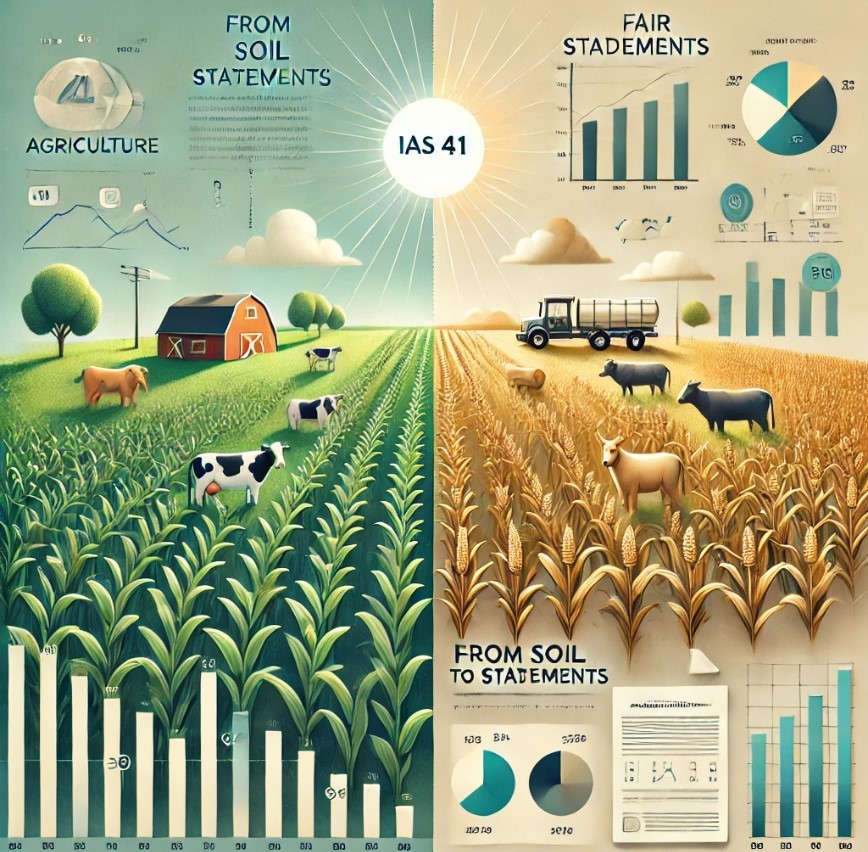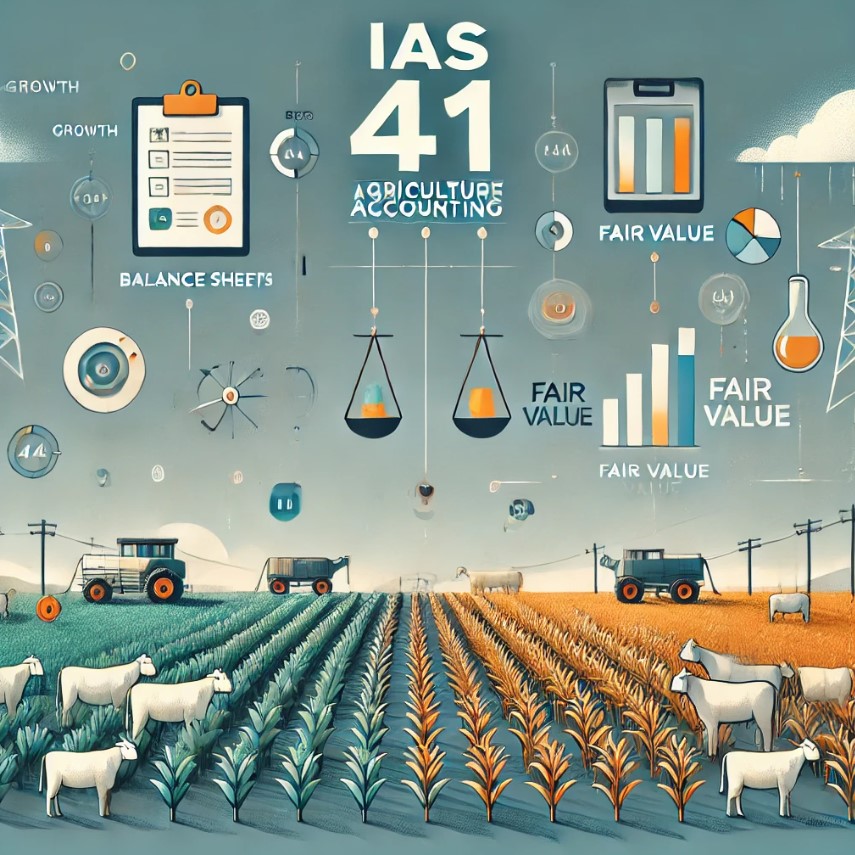
How Crops and Cattle Become Assets – Inside IAS 41
🌾 Wanna know how standing crops go on a balance sheet?
Let’s decode IAS 41 – Agriculture
IAS 41 is a distinctive accounting standard under IFRS that focuses exclusively on agricultural activities. It brings biological transformation — the process of growth, degeneration, and reproduction of living plants and animals — into financial reporting. Unlike traditional standards based on historical cost, IAS 41 requires biological assets like crops or livestock to be measured at fair value, offering a transparent and timely view of an entity’s agricultural operations.
"A field full of crops isn't just a promise of produce — it's value already growing under the sun."
IAS 41 recognises what traditional accounting missed — that nature’s work deserves a place on your balance sheet. In a world driven by real-time decisions, even biology must be measured in numbers.
🚜 What does IAS 41 cover?
This standard provides guidance on the accounting and reporting of biological assets and agricultural produce before harvest. It captures nature’s transformation — from planted seeds to maturing crops, from breeding livestock to milk-producing animals — all recorded with financial precision.
- Applies to living plants and animals undergoing biological transformation
- Requires measurement at fair value less costs to sell
- Gains or losses from value changes are recognised in the Profit or Loss
- Ensures timeliness and relevance in agricultural reporting
🌱 Key Definitions
To apply IAS 41 effectively, it’s essential to understand the core definitions:
- Biological Asset: A living animal or plant
- Agricultural Produce: Harvested product derived from a biological asset
- Bearer Plants: Used solely for the production of agricultural produce (e.g., grapevines) – covered under IAS 16 – Property, Plant and Equipment
📌 Scope of IAS 41
IAS 41 applies to agricultural activity, defined as the management of biological transformation of biological assets for sale, conversion into agricultural produce, or additional biological assets.
Included:
- Cultivation of crops (e.g., maize, sugarcane, cotton)
- Livestock management (e.g., poultry, dairy cattle, fish farming)
- Forestry and plantations (e.g., timber, rubber)
- Biological growth, reproduction, and harvest cycles
Excluded:
- Land (accounted for under IAS 16 or IAS 40)
- Government grants (covered by IAS 20)
- Post-harvest produce and processing (covered under IAS 2 – Inventories)
💰 Measurement at Fair Value
The hallmark of IAS 41 is the requirement to measure biological assets at fair value less costs to sell, both:
- At initial recognition
- At each reporting date
If fair value cannot be reliably measured (which is rare and only in exceptional cases), the entity may use cost less accumulated depreciation and impairment as a fallback.
Example:
If a standing sugarcane crop has a fair value of €250,000 and estimated selling costs are €10,000, it should be reported at €240,000.

🔁 Treatment of Fair Value Changes
IAS 41 mandates that changes in fair value be recognised immediately:
- All gains and losses from fair value fluctuations go directly to the Profit or Loss account
- No depreciation or amortisation is applied to biological assets
- Ensures that financials reflect the most current and market-based asset valuation
🏭 Post-Harvest: Enter IAS 2
Once the agricultural produce has been harvested, IAS 41 no longer applies.
- Post-harvest inventory (e.g., harvested grain, milk, timber) is treated under IAS 2 – Inventories
- This ensures cost, net realisable value (NRV), and inventory performance are properly tracked
So:
Standing wheat crop = IAS 41
Bagged wheat grain = IAS 2
📋 Required Disclosures
To ensure transparency and comparability across entities, IAS 41 requires disclosure of:
- The nature and extent of agricultural activity
- Methods and key assumptions used for determining fair value
- Reconciliation of changes in the carrying amounts of biological assets
- Restrictions or commitments on biological assets (e.g., pledges or liens)
📈 Real-World Use Cases
IAS 41 is especially relevant for:
- Agribusinesses listed on international stock exchanges
- Companies in forestry, aquaculture, and crop production
- Agro-tech firms dealing with biological innovation
- Investors and auditors requiring real-time valuation of growing assets
🧠 Final Thoughts
IAS 41 brings biological growth and transformation into financial reality. By valuing crops, livestock, and plantations at fair value, it aligns accounting with the actual biological cycle of nature. As agriculture becomes increasingly tech-driven and investment-focused, IAS 41 ensures that the financial reporting keeps up with the ground reality — quite literally.
🔔 How do you reflect the value of something that’s still growing?
